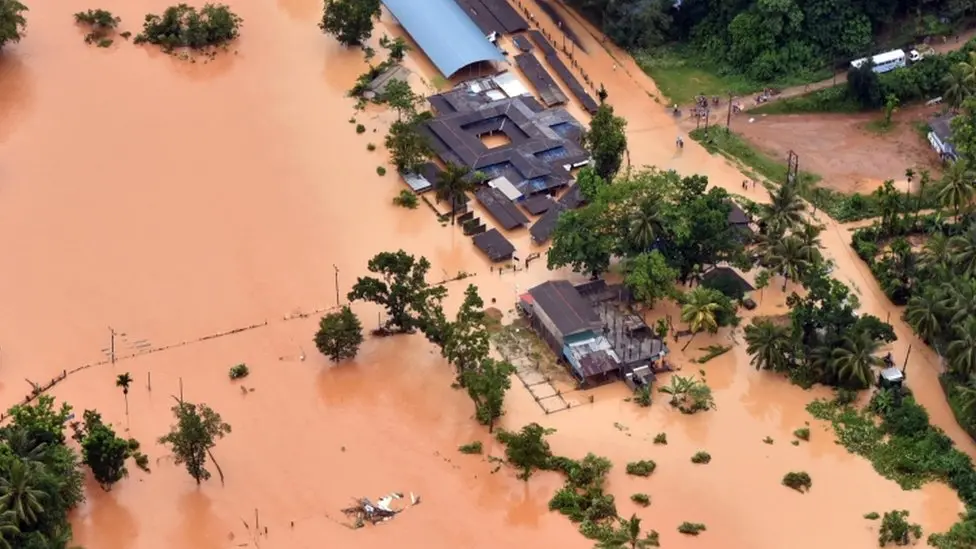Together we have supported 26 people through 24 donations
Current Appeals
See all



Let’s ensure communities get exactly what they require.
Together we meet unmet needs.
See What’s NeededMeet the current need
Filter
See all
Body wash/soap
Quantity Needed: 500
500 Elderly Women with Disabilities in Phalombe, Mulanje, Zomba Need Body Wash Support"*In Phalombe, Mulanje, and Zomba, 500 elderly women with disabilities face humiliation and health risks daily due to lack of body wash/soap. Many live alone, relying on limited support, and struggle to maintain basic hygiene - affecting their health, dignity, and social interactions.Meet Esther, 75, in Phalombe: "Without soap, I feel dirty. I avoid visitors." Stories like hers highlight the urgent need.Their plea: **"Donate body wash/soap. Give us dignity. Keep us healthy."With your support, they can:🧴 Maintain hygiene, prevent infections💪 Feel valued, respected in their communities🏥 Focus on health, not soap worries*Impact:*- 500 women gain dignity, better health- Reduced infection risks in hospitals- Stronger, healthier communities- Families relieved from caregiving burdens*The Ask:* Donate body wash/soap via Centre for Disability and Elderly Affairs (CDEA) to support these 500 elderly women in Phalombe, Mulanje, and Zomba.Join the dignity movement. Donate or share their story. #ElderlyCare #Malawi #HygieneMatters
Camping stove
Quantity Needed: 250
250 Women with Disabilities in Machinga, Thyolo, Zomba Seek Camping Stove Gas Support"*In the districts of Machinga, Thyolo, and Zomba, 250 women with disabilities face daily hardships fetching firewood or buying charcoal for cooking. This exposes them to risks, health issues, and environmental harm.Their plea: **"Donate camping stove gas. Ease our burden. Protect our forests."With gas stoves, they can:🔥 Cook safely, efficiently🌳 Reduce charcoal use, save trees⏱️ Gain time for income-generating activities*Impact:*- 250 women gain safer cooking methods- Less deforestation, healthier environment- Families benefit from saved income*The Ask:* Support these 250 households in Machinga, Thyolo, and Zomba with camping stove gas donations.Join the movement. Donate or share their story. #EmpowerWomen #SustainableMalawi
Bicycle
Quantity Needed: 20
People with Disabilities in Mangochi, Balaka, Zomba NEED Tricycles NOW"*In Mangochi, Balaka, and Zomba, 150 individuals with disabilities aged 20-60 are counting on YOUR support. Daily struggles to move around are taking a toll on their lives, limiting access to work, healthcare, and social connections.Meet Mary, a 35-year-old in Mangochi who lost her leg in an accident. "I want to sell veggies at the market, but without mobility, I'm stuck," she says. Stories like Mary's are common among the 150, who yearn for independence.*Their plea:* "Donate a tricycle. Give us mobility. Give us dignity."With tricycles, they can:🚲 Transport goods, earn income🏥 Access healthcare easily👥 Join community life, feel valued*TIME IS TICKING.* Donate a tricycle or funds NOW to change lives in Mangochi, Balaka, and Zomba.*Impact:*- *150 people gain independence*: Move freely, earn, and contribute- *Families benefit*: New income sources, better food, education- *Communities grow stronger*: Inclusive economic growth, diversity- *Role models emerge*: Disability no longer means inability*Every delay hurts.* Support these 150 individuals. Donate today! 💪 #DisabilityInclusion #Malawi #ActNow
Bed and mattress
Quantity Needed: 15
For The Forgotten Elderly. For Malawi’s Vulnerable Seniors" the quiet villages and bustling towns of Malawi, a silent crisis unfolds. Among the elderly population between 65 and 90 years old, many live in abject poverty, lacking basic necessities like beds and mattresses. These seniors, who once built the nation, now struggle to find dignity in their twilight years.<br /><br />Meet 75-year-old Mary Chisomo, who sleeps on a torn mat on the floor. "I can’t afford a bed," she says, her voice barely above a whisper. Like Mary, thousands of elderly Malawians face similar hardships, their struggles often overlooked.<br /><br />*The Reality:*<br /><br />- Many elderly live below the poverty line<br />- Lack of beds and mattresses exacerbates health issues<br />- Limited access to healthcare and social support<br /><br />*The Need:*<br /><br />- Beds and mattresses to improve living conditions<br />- Healthcare support and check-ups<br />- Social inclusion and community support<br /><br />*How You Can Help:*<br /><br />- Donate beds, mattresses, and blankets<br />- Support local organizations providing elderly care<br />- Volunteer your time or skills<br /><br />Let’s give Malawi’s elderly the dignity they deserve. Join the movement to support our seniors.<br /><br />HELP MALAWI'S ELDERLY!<br />Thousands of seniors (65-90) live in poverty, lacking beds & mattresses. Let's give them dignity! Donate beds, blankets, or support local elderly care.<br /><br /><br />#ElderlyCare #Malawi #DignityForAll
Educational materials
Quantity Needed: 99
A Pencil Can Change a Life. Every morning, Raju walks to school with hope in his eyes—but his school bag is empty. He borrows a pencil from his friend, writes carefully, and erases slowly so it lasts longer. When the pencil breaks, his learning stops.Raju is not alone.Many underprivileged children come to school without notebooks, pens, or basic stationery. Their dreams are strong, but their resources are weak. A simple stationery kit—a notebook, a pen, a pencil, and colors—can mean the difference between sitting silently in class and raising a hand with confidence.At Gram Sewa Sangh, Nagpur, we believe that no child should be held back because of poverty. With your support, we want to place a complete stationery kit into the hands of children like Raju—so they can write their dreams, draw their future, and learn with dignity.One kit. One child. One step toward a brighter tomorrow.Join us in turning empty bags into bags full of hope.
Bed set - sheets, blanket
Quantity Needed: 5000
"FLOODS HIT SOUTHERN MALAWI: 5000 PEOPLE WITH DISABILITIES URGENTLY NEED SUPPORT. In early March, dark clouds gathered over the Shire Valley in Malawi’s Southern Region. Within hours the rivers swelled, breaking their banks and flooding villages from Chikwawa to Nsanje. Water surged through fields, homes, and roads, leaving a trail of destruction.<br /><br />Among the hardest hit were the 5,000 people living with disabilities — many confined to wheelchairs, crutches, or prosthetic limbs. The rising waters swallowed their mobility aids, and the chaos made evacuation nearly impossible. Families huddled in makeshift shelters, shivering under plastic sheets, their voices muffled by fear and fatigue.<br /><br />Local NGOs scrambled, but supplies ran out fast. One urgent need stood out: *5,000 blankets (wheelchairs)* — the difference between mobility and being stranded.<br /><br />That evening, under a flickering lantern, community leader Grace M. wrote a plea: _“Our rivers have risen, but our resolve hasn’t fallen. We need your hands to lift us again. Partner with us, donate wheelchairs, and help rebuild hope.”_<br /><br />The message traveled beyond borders, lighting a spark of compassion in donors worldwide.<br /><br />*Why it matters:*<br />- *5,000 people with disabilities* impacted<br />- *Floods devastated* homes and infrastructure<br />- *Immediate need:* 5,000 blankeys to restore mobility<br /><br />Heavy rains and floods in Nsanje, southern Malawi, have left 5000 people with disabilities struggling to survive. With homes destroyed and aid scarce, they urgently need blankets, food, and medicine.<br /><br />"We need blankets and support to get through this," says a displaced resident.<br /><br />Donors are urged to support relief efforts. Let's help those affected rebuild their lives!
Bags and Purses
Quantity Needed: 70
Learning Without Limits in Southern Malawi, In the vibrant villages of Chikwawa and Nsanje, Southern Malawi, children with disabilities were often left behind in education. But one initiative brought hope: "Inclusion in Learning".<br /><br />At Mponda Primary and Bangula Secondary Schools, 7000 children with disabilities got a life-changing gift. Volunteers handed out colorful bags packed with notebooks, pens, and braille kits. "Today, I can write like everyone else!" beamed 12-year-old Thandiwe, who’s visually impaired.<br /><br />Teacher Agnes Phiri noticed the spark: "These supplies mean they can join class without fear. It’s dignity in learning."<br /><br />The support didn’t stop there. Specially designed desks and ramps made schools accessible. "Now my wheelchair fits everywhere," said 15-year-old Kondwani, grinning.<br /><br />The impact was clear: attendance soared, and dreams grew bigger. "I want to be a teacher!" said Thandiwe.<br /><br />*How you can help:* Support more children like Thandiwe and Kondwani. Donate bags, stationery, or funds to make schools inclusive.<br /><br />#InclusionMatters # Education For all#<br /><br />"7000 children with disabilities in Southern Malawi got bags & stationery! "Inclusion in Learning" is making schools accessible in Chikwawa & Nsanje. Support more kids like Thandiwe & Kondwani. Donate now! #InclusionMatters #MalawiSchools"
Our change makers
Sponsored by




